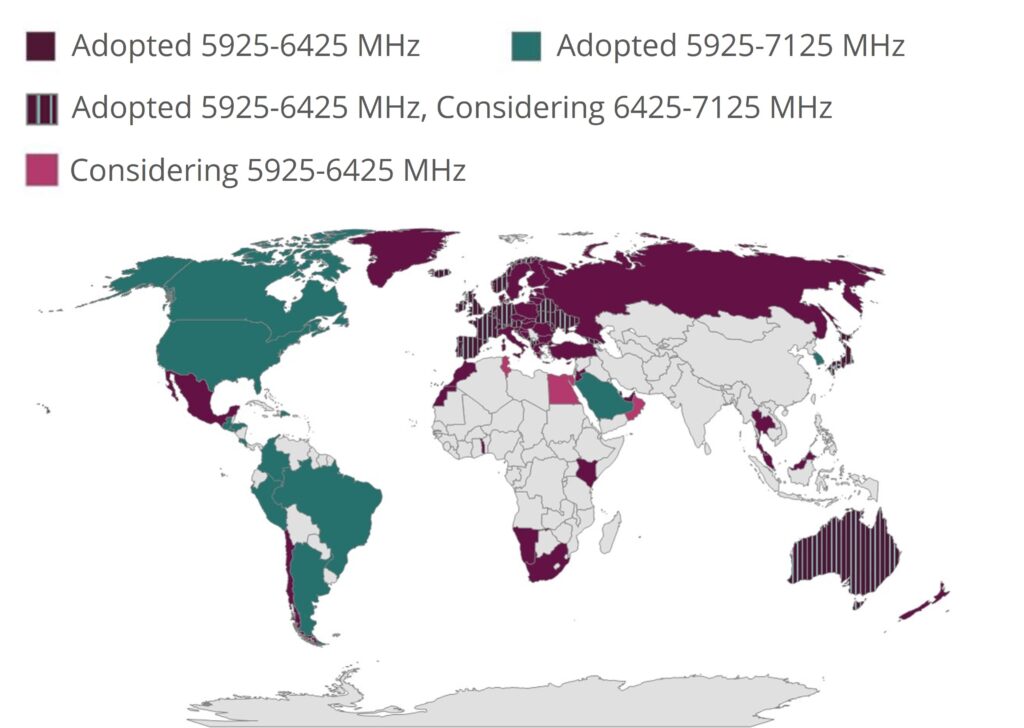According to Broadcom, the Wi-Fi 6/6E market is ‘fully saturated’
Wi-Fi 6, or IEEE 802.11ax, was certified by the Wi-Fi Alliance in the fall of 2019, and unlike past upgrades, this generation highlighted efficiency by introducing multi-user concepts, rather than focusing solely on faster speeds and bigger channels. Then, the Federal Communications Commission (FCC) made Wi-Fi even more powerful by opening up the 6 GHz band (5925-7125 MHz) for Wi-Fi use, a capability known as Wi-Fi 6E. With this decision, the Federal Communications Commission (FCC) made an additional 1,200 megahertz of spectrum available for unlicensed Wi-Fi use, and according to most industry experts, it was the biggest thing to happen to Wi-Fi in the last decade.
Global spectrum update
While the U.S. was the first country to open up the 6 GHz band for Wi-Fi, several others have followed suit, whether that means designating the entire 1,200 megahertz of spectrum for Wi-Fi or just sections of the band. The most recent announcements have come from Singapore and South Africa, with the former announcing the decision to allocate the lower segment of the 6GHz band (5,925 MHz-6,425 MHz) for 6 GHz Wi-Fi use in June 2023, and the latter opening up the lower band for Wi-Fi a month prior.

Countries that have designated the entire band for Wi-Fi use, like the U.S., include Brazil, Canada, Costa Rica, Guatemala, Honduras, Peru and Saudi Arabia. Many others have partially adopted the 6 GHz band — such as Chile, Australia, Hong Kong, Kenya and the European Union — with several of them weighing the allocation of more of the band in the future. And still others, such as Tunisia and Oman, are actively considering using the 6 GHz for Wi-Fi. A full list of countries can be seen here.
Device shipment update
In addition to notable spectrum progress, there has also been impressive momentum around device adoption. According to IDC Research, 3.8 billion Wi-Fi devices are forecast to ship in 2023 alone. The firm went on to predict that 473 million of those are expected to be Wi-Fi 6E devices and that 94.6 million Wi-Fi 6E AP devices will ship in 2023.
Further, the firm expects more than 18% of all Wi-Fi 6 device shipments to be Wi-Fi 6E in 2023, a ratio that will grow to 32% in 2025. Looked at another way, IDC projects that two-thirds of Wi-Fi shipments in 2023 will be Wi-Fi 6 or Wi-Fi 6E.
“Wi-Fi 6/6E today is, in my mind, fully saturated. When you add the two of them together, it’s like over 80% of all units sold in the enterprise,” Broadcom’s Director of Product Marketing for Enterprise Wireless Communications and Connectivity Mike Powell told RCR Wireless News. “With that being said, the 6E portion is a fairly small, but growing, portion today given that enterprises were looking for standard power and waiting for the iPhone. And now with those things in play, Wi-Fi 7 is very close. We saw them do a whole portfolio of Wi-Fi 6, a limited portfolio of Wi-Fi 6E because they knew it would be close in time to Wi-Fi 7. Now with Wi-Fi 7, they are going to do a whole new portfolio, top to bottom.”

